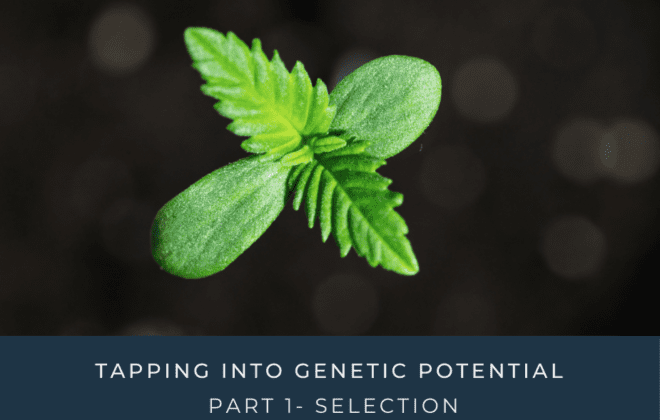Understanding the Transition to LED

Do LEDs Actually Impact the Calcium-Magnesium Levels in Cannabis?
When converting from HPS or HID lighting to LEDs, some growers have reported a difference in the way that their cannabis absorbs inputs, specifically Calcium and Magnesium. This has created an ongoing debate about nutrients and lights and a bit of controversy about LED lighting.
LEDs have been shown to help increase yields, productivity, and the overall health of the cannabis plant. However, they are most effective when the entire growing environment is in line including regular monitoring of the VPD levels so that your plant has the ideal leaf temperature and humidity levels to absorb those vital nutrients.
SO, DO LEDS IMPACT THE CALCIUM-MAGNESIUM NEEDS?
This is a common question among growers, however, the answer is not a simple one.
LEDs have a direct impact on your plant’s growing environment. To expand your understanding a bit further, it helps to explore how switching to LEDs will alter the temperature and humidity of your space.
One of the biggest differences between LED lights and HPS lights is that LEDs do not emit infra-red waves. In most cases, the fact that LEDs do not emit large amounts of heat is extremely positive. This feature alone will have a direct impact on the overall energy load of your facility and make it easier to have a consistent environment.
Alternatively, infra-red lights heat up the plant and growing medium. The heat these lights give off change other aspects of the environment, including the temperature and humidity. They essentially act as both a light and a heat element, so when making the switch to LED you need to take into account that that heat source is now removed. This includes making an adjustment to the Vapour Pressure Deficit (VPD) to create the ideal growing environment for your cannabis plants.
WHAT DOES THIS HAVE TO DO WITH NUTRIENTS?
Often times when growers switch out their lights, they notice that their plants are reacting differently to the inputs. Suddenly, the same level of nutrients that were added when the grower was using HPS lights is now either burning your plants or causing nutrient deficiencies resulting in slow growth.
Although it’s easy to blame it on the LEDs, the story is a bit more complicated than that.
In fact, most cultivars will not require any changes to their nutrient regime, as long as all other environmental factors are in the proper ranges.
This is because the environment plays a major role in how your plants uptake the nutrients. If growers are looking to maintain the same nutrient schedule that they had before they converted to LEDs, then, they need to recreate the previous environment, especially VPD.
Understanding VPD is critical as it provides insight into how water interacts with your crops-both in the air and within the substrate. Including measuring the leaf surface temperature, not just the room air temperature. This information will also give you a deeper understanding of how a healthy plant controls its water and nutrient uptake.
On a positive note, if we keep the temperature of the biomass of the plants, as well as the relative humidity, in the proper range, then the VPD will be correct. The plants will essentially exhale the ideal amount of water vapour from their leaves and in turn uptake the ideal amount of water and nutrients from their roots.
So, once you recreate that ideal range, you can most likely maintain the same nutrient schedule as before.
The BENEFIT OF LED
The key message here is that we need to make sure that crops are grown under the most ideal conditions possible- no matter your light source. One of the benefits of LEDs is that they help increase the photosynthetic activity of the plant, including providing a more chlorophyll-targeted spectrum. The benefits of this targeted spectrum includes higher yields, consistent plant size, and larger buds.
However, in some varieties, this may also mean that the plants need a bit more nutrients to keep up.
There always will be some cultivars that will require more calcium and/or magnesium when growing them under LED as compared to other light sources. So pay attention to how your plant responds to the new growing environment, check the VPD, and make adjustments (including less or more inputs) as needed.




